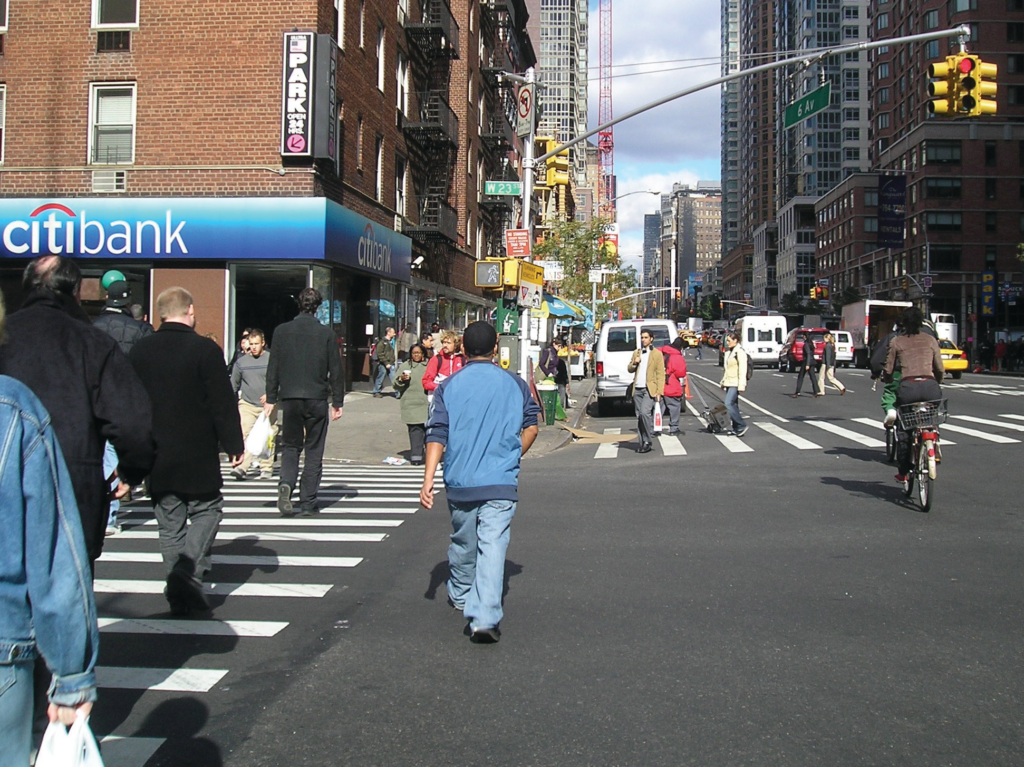Application
Coordinated signal timing synchronizes traffic movements and manages the progression speed of specific modes where uninterrupted flow is desired along a corridor. While traditionally applied to increase vehicular traffic flow and reduce peak-hour delay, coordinated signal timing can also be optimized for slower speeds, creating an uninterrupted flow for bicyclists or low vehicle progression speeds for a pedestrian-friendly downtown. Signals may also be timed to coordinate transit headways along routes where regular transit service is consistent and has low variability.
Coordinated signal timing is typically applied on corridors with closely spaced intersections (1/4 mile or less), and where there is evidence of a desire for “platooning”—the seamless flow of a given street user or set progression speed. Where applied, coordinated signal timing should meet the specific goals and parameters of the surrounding context.
Benefits & Considerations
Coordination of traffic signals can reduce the number of stops along a corridor and provide for a continuous flow of traffic at the target speed. Progression speeds should be set at or below the target speed, rather than existing 85th-percentile speeds.
Care should be taken to develop off-peak signal timing plans that respect the lower-traffic conditions that may benefit from a much lower cycle length than the peak hour. Similarly, weekend signal timing plans should be responsive to the needs of the community.
Signal Timing Categorization

Cycling Streets
Bicyclists traveling at 12–15 mph receive a green indication at successive intersections, resulting in a platoon of bicyclists along a corridor.

Downtown Areas
Coordinated signal timing for downtown areas may be established where consistent pedestrian or bicycle travel has been prioritized over vehicle travel. In such cases, a designer may coordinate signals to reward slower driving speeds of 15–20 mph through the downtown area.

Coordination with Transit
On transit routes, shorter signal cycle lengths may improve transit times by increasing turnover and reducing side-street delay. Cycle lengths of 60 seconds are recommended for most transit routes without transit signal prioritization in effect. Intersections with transit signal priority may benefit from slightly longer cycle lengths due to the flexibility it provides an engineer to modify time on a cycle-by-cycle basis.1
- Harriet R. Smith, P. Brendon Hemily, and Miomir Ivanovic. Transit signal priority (TSP): A Planning and Implementation Handbook (Washington, D.C.: ITS America, 2005). ↩︎